As deep learning continues to revolutionize industries from transportation to healthcare, easy-to-use frameworks like TensorFlow have become the backbone, enabling businesses to build and deploy neural networks. Developed by Google specifically for production-scale deep learning, TensorFlow simplifies everything from model prototyping to deployment across diverse platforms.
Adoption has exploded in recent years as enterprises race to capitalize on game-changing AI capabilities. Estimates project the global deep learning market to reach $20 billion by 2027, according to Reports and Data - and TensorFlow remains the framework of choice for most developers. The 2022 Kaggle State of Data Science report found close to 80% of data professionals now leverage TensorFlow in projects.
These TensorFlow advantages translate directly into time and cost savings for today’s AI-driven enterprises. Read on as we detail why TensorFlow has become the standard for delivering real-world deep learning success.
Benefits of Using TensorFlow in Deep Learning and ML
From improved performance and efficiency to flexibility and scalability, TensorFlow provides a comprehensive set of tools and features that empower users to create advanced models and achieve remarkable results.
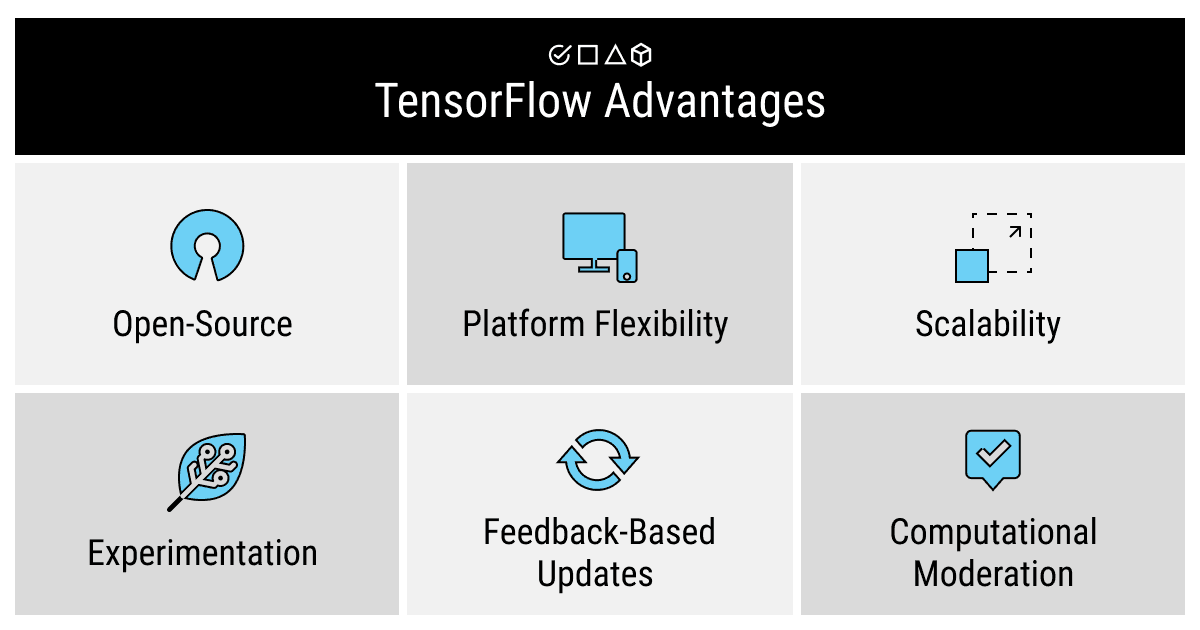
1. Improved Performance and Efficiency
TensorFlow delivers impressive performance and efficiency, making it a preferred choice for deep learning and machine learning tasks. It optimizes the execution of computational graphs, ensuring faster processing of data.
By utilizing GPUs and TPUs, TensorFlow significantly accelerates training and inference, reducing the overall computational time. Additionally, TensorFlow's efficient memory management enables seamless handling of large datasets, further enhancing performance.
2. Flexibility and Scalability
One of the significant advantages of TensorFlow is its flexibility and scalability. It allows users to build models of any size and complexity, empowering them to tackle various machine learning and deep learning problems.
TensorFlow's ability to scale models effortlessly ensures that it can handle large datasets without sacrificing performance. Moreover, TensorFlow is not limited to specific hardware or operating systems, allowing developers to choose their preferred environment.
3. Comprehensive API
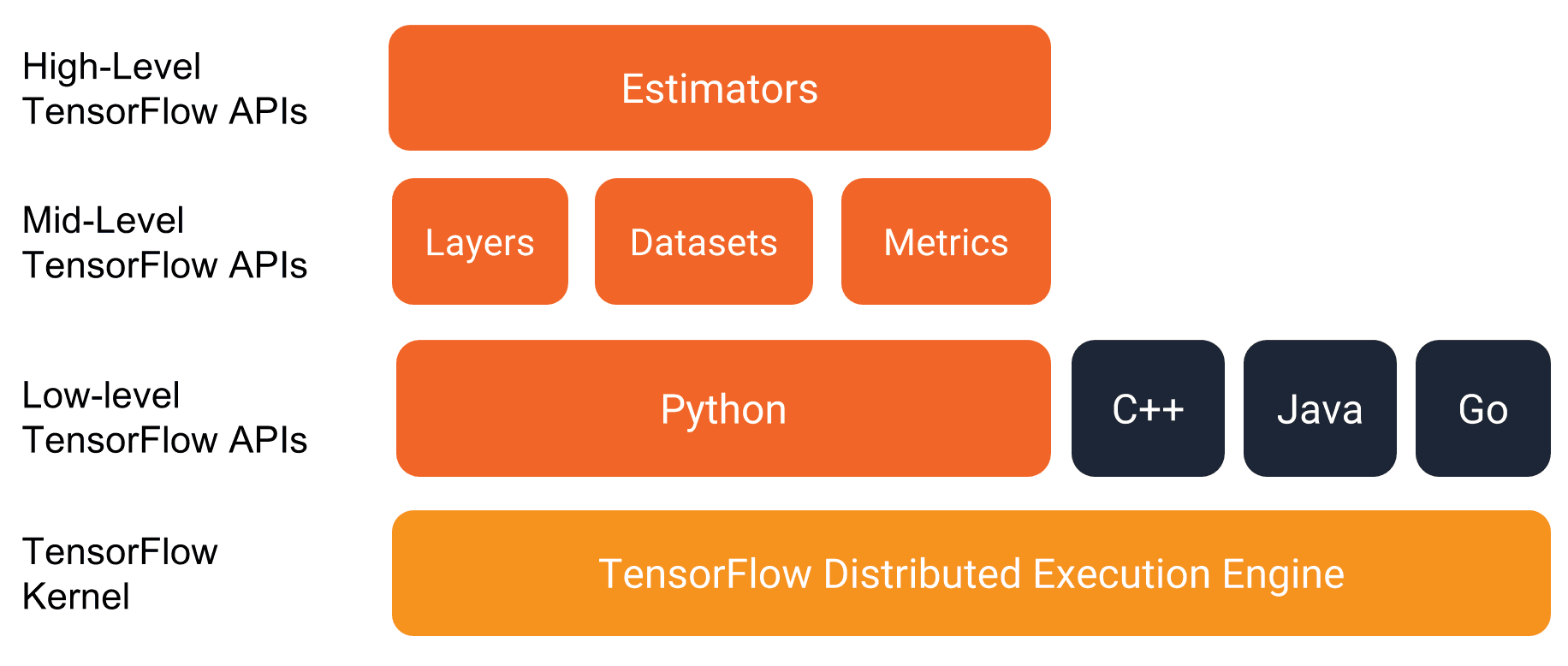
TensorFlow offers a comprehensive API that simplifies the implementation of complex deep-learning models. It provides a wide range of pre-built functions and APIs for different tasks, which can be efficiently utilized to create sophisticated models.
TensorFlow's high-level APIs, such as Keras, allow developers to build models with minimal code, significantly reducing implementation time. Conversely, its low-level APIs offer more granular control over model architecture and training process, catering to advanced users' requirements.
4. Extensive Ecosystem and Community Support
The TensorFlow community is vibrant and active, providing extensive ecosystem support to users. It comprises developers, researchers, and enthusiasts who actively contribute to the growth and development of TensorFlow. The community-driven nature ensures continuous improvements and updates to the framework—moreover, TensorFlow benefits from Google's support, contributing to its reliability and stability. The availability of pre-trained models, libraries, and resources further enriches the ecosystem, enabling developers to leverage existing work for their projects.
Suggested Reading:
5. Visualization and Debugging Tools
TensorFlow offers built-in visualization and debugging tools that facilitate developing and optimizing deep learning models. Its visualization tools clearly represent the model's architecture, making it easier to understand and debug complex models.
Additionally, these tools help monitor the training progress, identify potential bottlenecks, and optimize model performance. With TensorFlow's visualizations, developers can gain valuable insights into the behavior and performance of their models.
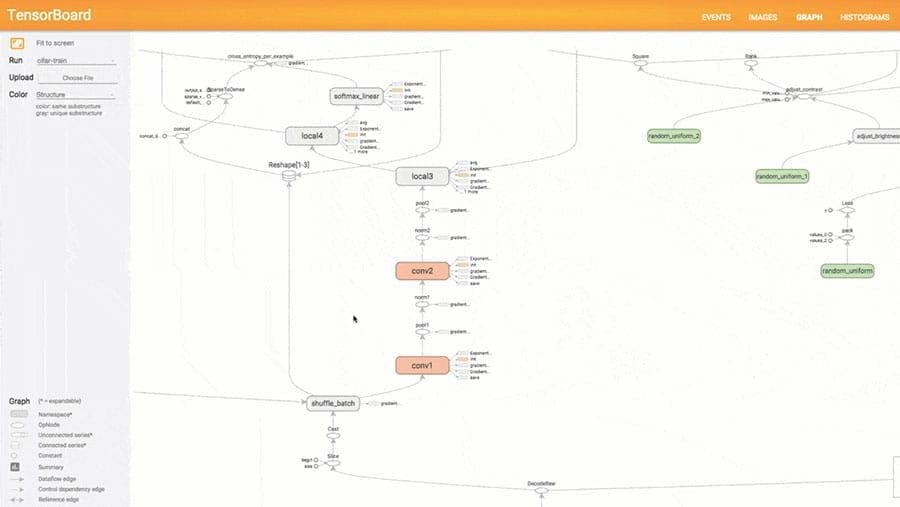
6. Natural Language Processing Capabilities
TensorFlow's natural language processing (NLP) capabilities make it an excellent choice for text analysis tasks. It provides pre-built modules for various NLP tasks like tokenization, parsing, and language modeling.
These modules simplify the implementation of NLP models, saving time for developers. Moreover, TensorFlow seamlessly integrates with popular NLP libraries like NLTK and spaCy, allowing users to leverage their functionalities along with TensorFlow's power.
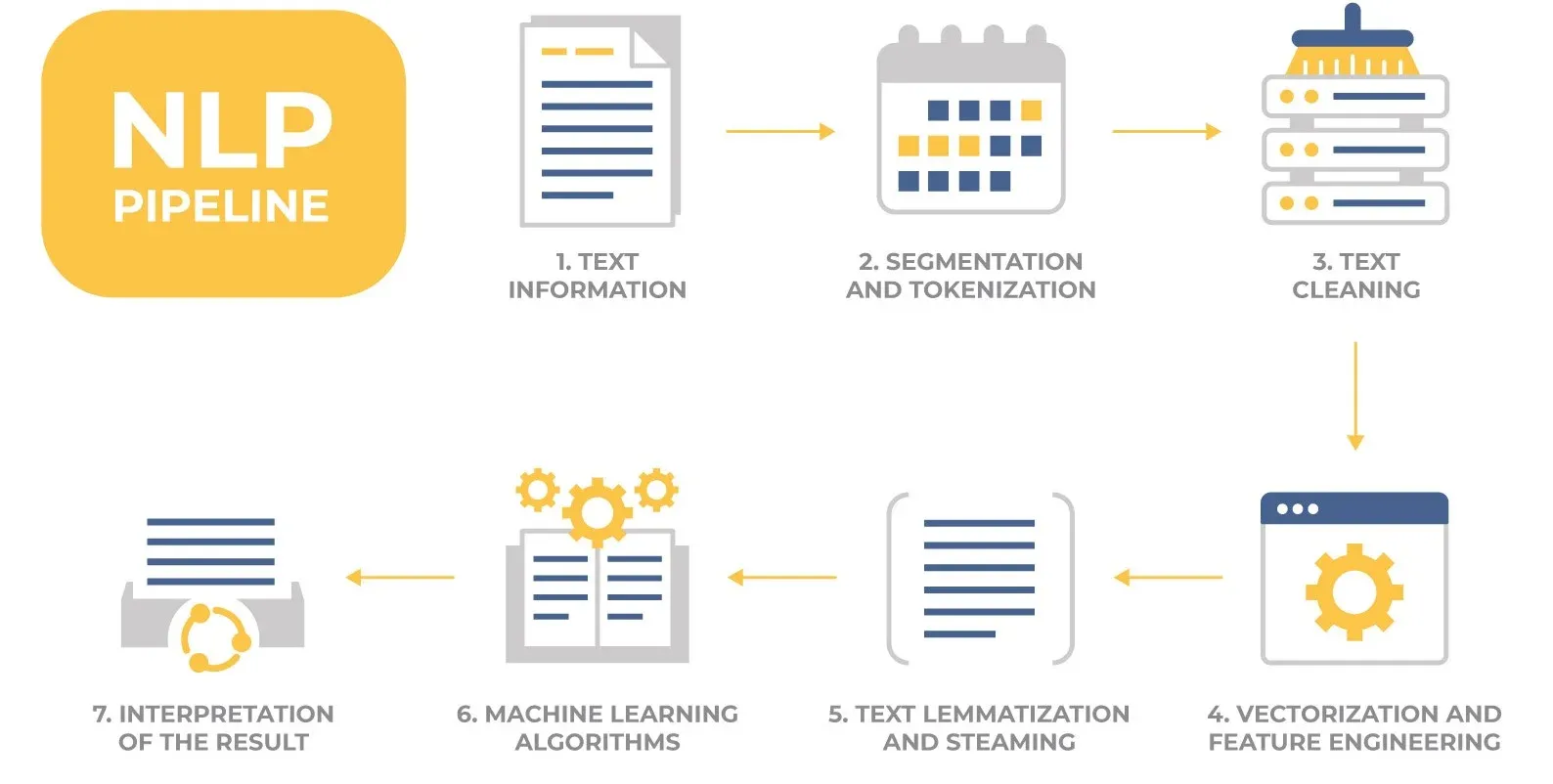
7. Reinforcement Learning Support
TensorFlow supports reinforcement learning, a branch of machine learning that focuses on training agents to make decisions based on rewards and feedback. With TensorFlow, developers can quickly implement and train reinforcement learning algorithms, effectively solving complex sequential decision-making problems.
TensorFlow's reinforcement learning library and its compatibility with popular reinforcement learning frameworks like OpenAI Gym provide a comprehensive solution for building intelligent agents.
8. Distributed Training
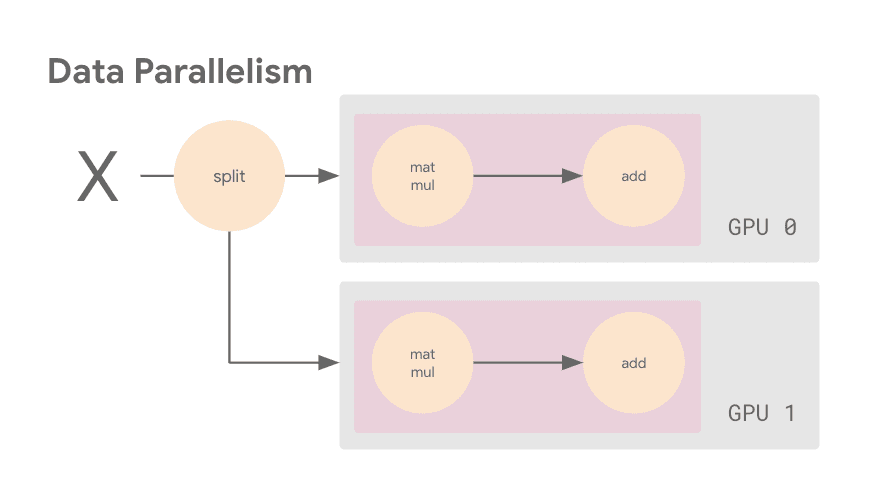
TensorFlow enables distributed training, allowing users to train models across multiple machines and devices. This capability is particularly beneficial for training large models or dealing with massive datasets.
Distributed training enables efficient utilization of computing resources, reducing the overall training time. TensorFlow seamlessly synchronizes model parameters and gradients, ensuring consistent updates across all devices involved in the training process.
Suggested Reading:
9. Transfer Learning
Transfer learning is a technique that enables the transfer of learned knowledge from one task or domain to another. TensorFlow has extensive support for transfer learning, providing pre-trained models for various tasks.
Users can leverage these pre-trained models to kickstart their projects, benefiting from the features learned in previous tasks. Transfer learning reduces the training time and improves the performance of models, as they can leverage the general features learned from a larger dataset.
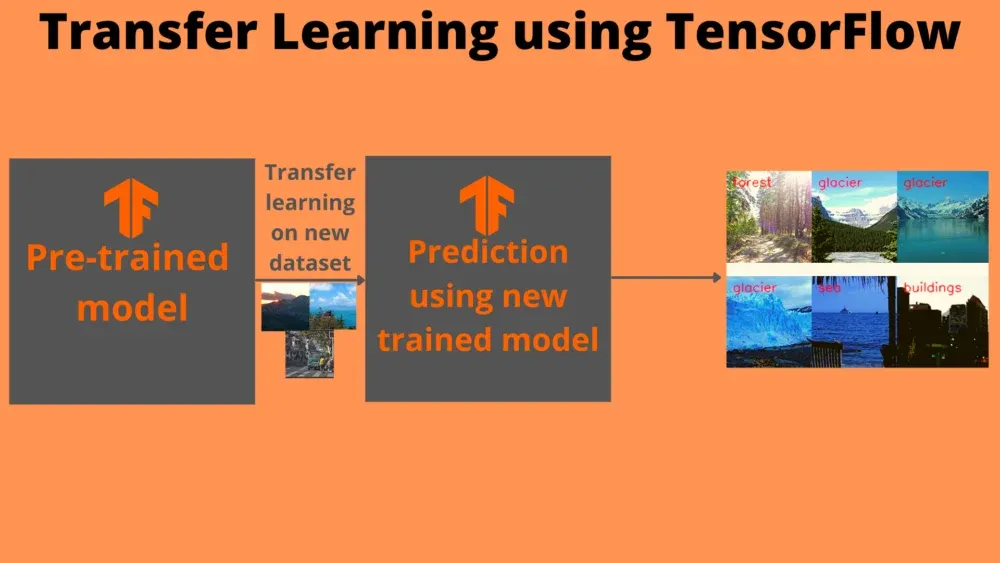
10. Automatic Differentiation
Automatic differentiation is a crucial component of deep learning that enables efficient computation of gradients for model training. TensorFlow integrates automatic differentiation seamlessly into its framework, simplifying the implementation of complex neural network architectures.
With automatic differentiation, developers can easily calculate gradients required for backpropagation and other optimization techniques, saving significant time and effort in implementing advanced models.
11. Model Deployment and Serving
TensorFlow provides convenient tools for deploying trained models into production environments. It offers easy conversion of models to production-ready formats, ensuring compatibility with various deployment frameworks.
TensorFlow Serving, for instance, simplifies the serving of trained models at scale, allowing seamless integration with production systems. With TensorFlow's model deployment and serving capabilities, developers can efficiently implement their trained models, making them readily available for real-world use.

12. Cloud Integration
TensorFlow seamlessly integrates with cloud platforms like Google Cloud and AWS, enabling users to leverage the benefits of cloud computing for their deep learning and machine learning projects.
Deploying TensorFlow on the cloud provides scalable and cost-effective solutions, allowing for efficient storage, processing, and resource allocation. TensorFlow's integration with cloud services ensures that users can leverage the power of the cloud without the hassle of complex setup and configuration.
13. Hardware Acceleration
TensorFlow harnesses the power of specialized hardware, such as GPUs (Graphics Processing Units) and TPUs (Tensor Processing Units), to accelerate training and inference. TensorFlow's compatibility with GPUs and TPUs allows users to take advantage of their parallel processing capabilities, boosting computational performance.
Hardware acceleration significantly reduces training time and enables faster experimentation, making TensorFlow an efficient and time-saving platform for deep learning and machine learning tasks.
Suggested Reading:
14. Continuous Learning and Improvement
TensorFlow benefits from continuous development and updates by Google and the open-source community. This ensures that TensorFlow remains at the forefront of technology, incorporating cutting-edge research and algorithms.
The contributions from a diverse set of developers, researchers, and organizations result in a powerful and evolving framework. By using TensorFlow, users can access the latest advancements in deep learning and machine learning, enabling them to build state-of-the-art models and stay up-to-date with the latest techniques.
15. Industry Adoption and Popularity
TensorFlow has gained significant popularity and widespread adoption in both industry and academia. Google heavily supports it, making it a trusted choice for many organizations.
A broad range of real-world applications across various industries, including healthcare, finance, and retail, validate the reliability and effectiveness of TensorFlow. Furthermore, TensorFlow's popularity has led to numerous tutorials, courses, and resources, making it easier for newcomers to get started and experienced users to enhance their skills.
Conclusion
Since its open-sourcing by Google in 2015, TensorFlow has rapidly become the leading framework for deep learning and machine learning research and deployment. Its popularity stems from a powerful array of capabilities that enhance model performance, simplify workflows, and enable seamless scaling.
TensorFlow facilitates fast neural network prototyping with intuitive Python APIs and pre-built components for common architectures like CNNs and RNNs. TensorBoard visualization tracks training metrics in real-time, aiding swift iteration for optimal model accuracy.
TensorFlow excels in production with seamless export modules for scalable inference, tight integration with Google Cloud for distributed training, and streamlined deployment on Kubernetes. It also supports reinforcement learning with libraries like DQN and enables secure aggregation across decentralized edge devices through TensorFlow Federated API.
With such a complete end-to-end stack of features and functionalities, it is no surprise that over half of AI developers now use TensorFlow in projects, according to the 2022 Kaggle survey. Join them in unleashing deep learning’s immense power today.
Suggested Reading:
Frequently Asked Questions (FAQs)
Can TensorFlow be used for both deep learning and machine learning tasks?
Yes, TensorFlow is a versatile framework that can be used for both deep learning and machine learning tasks. It provides a wide range of functionalities and tools to support various applications in these domains.
Is TensorFlow compatible with different hardware and operating systems?
Absolutely! TensorFlow is not limited to specific hardware or operating systems. It offers flexibility and can be used on various platforms, enabling developers to choose their preferred hardware and operating system for their projects.
Does TensorFlow support reinforcement learning?
Yes, TensorFlow supports reinforcement learning. It provides tools and libraries for implementing and training reinforcement learning algorithms, allowing users to solve complex sequential decision-making problems effectively.
Can TensorFlow models be deployed in production environments?
Certainly! TensorFlow provides convenient tools for deploying trained models into production environments. It offers seamless integration with deployment frameworks and cloud platforms, making it easier to put models into action.
Is TensorFlow widely adopted in the industry?
Absolutely, TensorFlow has gained significant popularity and widespread adoption in both industry and academia. Many organizations and industries rely on TensorFlow for their deep learning and machine learning projects, showcasing its trustworthiness and effectiveness.


